DIY Accent Wall: Judges Paneling
This DIY Accent Wall is called Judges Panel and no, we’re not talking about the set of judges who sit together to make a ruling. This elegant and timeless wall is often mistaken with wainscoting due to its similarity; however, judges paneling is more versatile in that it can fill up a portion or the entire wall with common design elements like square or rectangular panels within a frame. Watch our video and follow the steps below to recreate this!
We used profile no. 163 base cap to create a judges panel accent wall design.
New to accent walls? Check out our DIY Accent Wall: Quick Start blog post to learn the basics!
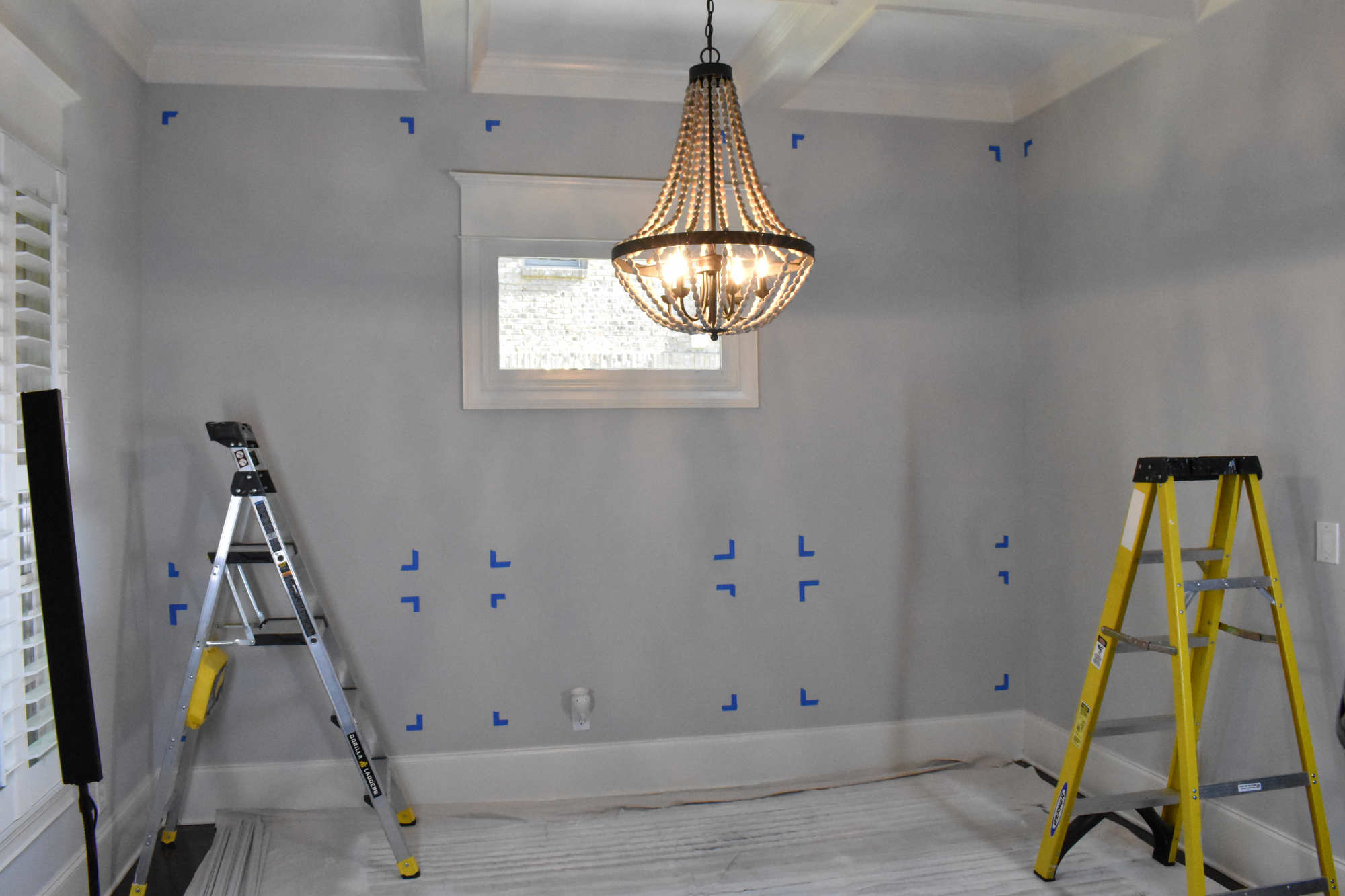
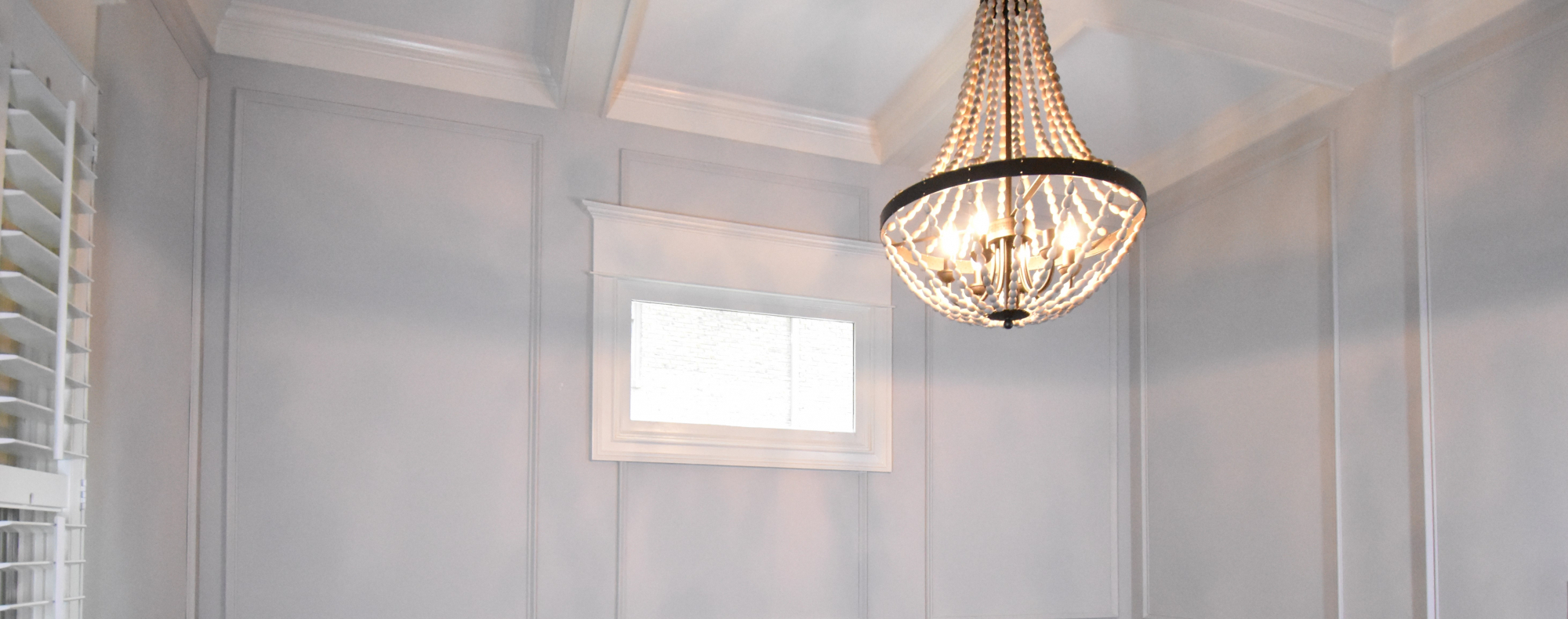
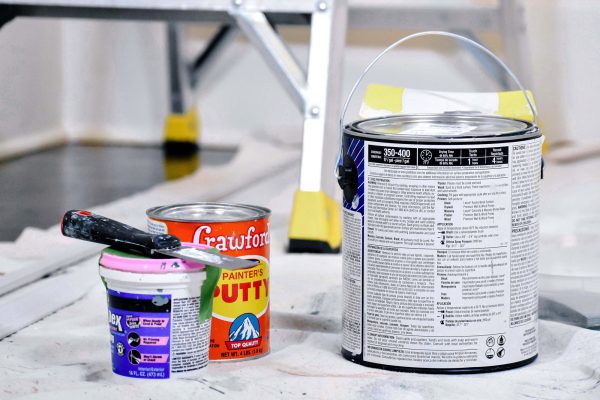
Materials:
- Plastic wood filler
- Measuring tape
- Level
- Paint (1 gallon)
- Nail gun and finishing nails (2” nails)
- Paper and tape to cover up areas for paint
- Saw to cut moulding
- Paint sprayer & brush
Profiles:
- 163 Base Cap, 11/16″ x 1-3/8″
Use this Green Print as a guide, but feel free to be creative with your design! Note: the size of your wall and the moulding used will affect the placement of the moulding.
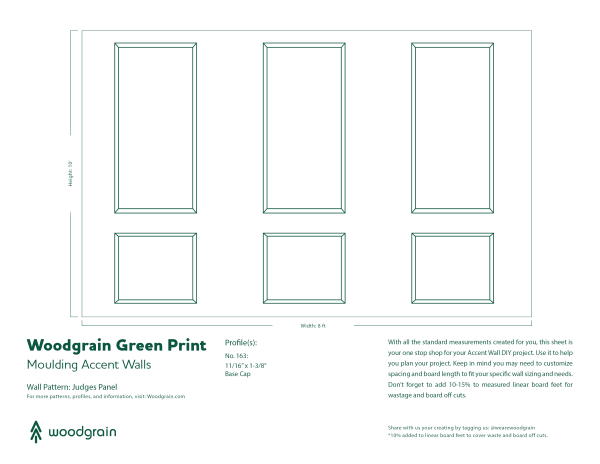
HOW TO INSTALL:
Prepare for painting
Mask areas that you don’t want to get paint on (outlets, lights, furniture, window ledges) and put a ground cloth on the floor to ensure the paint does not get on the floor.
Step 1: Paint your moulding
In this case, we used the same color paint that was already on the wall but in a satin finish to add contrast. For the moulding, we recommend painting with a sprayer before install. Touch up paint after holes are filled and seams are caulked.
Step 2: Measure and mark the walls
Measure the wall height and width, and make sure you take into consideration outlets, windows and light switches. This will help you get a feel for the board footage needed and where to cut your moulding. We recommend adding 10-15% board feet for waste and board cuts.
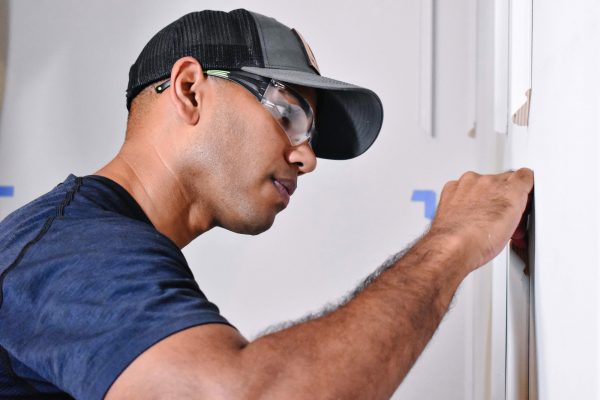
We placed duck tape on the walls to visually map out where the panels would be. However, don’t be afraid to draw on your wall since you’ll be painting over it anyway. Using a laser level can help you project lines onto your wall as well.
Step 3: Cut and install your moulding
Cut the moulding needed for your wall. After the vertical moulding was installed, we made 45 degree cuts for the horizontal installations. We recommend installing the vertical pieces first and then measuring the space between each vertical piece for a more accurate length of the horizontal pieces.
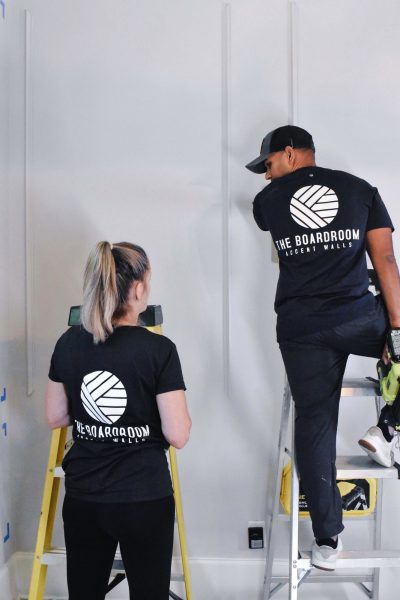
When installing your moulding try to keep your angles and spacing as consistent as possible. We recommend using 2” finishing nails and a nail gun to secure the moulding profile for long term wear and tear. Keep in mind you’re going to have to finish the moulding with plastic wood filler, so the fewer nails, the better for less work on the finishing process.
Step 4: Fill in the holes
Use plastic wood filler for all the nail holes and caulk all seams.
Additional Step: Touch up with paint as needed
And then enjoy your elegant accent wall!
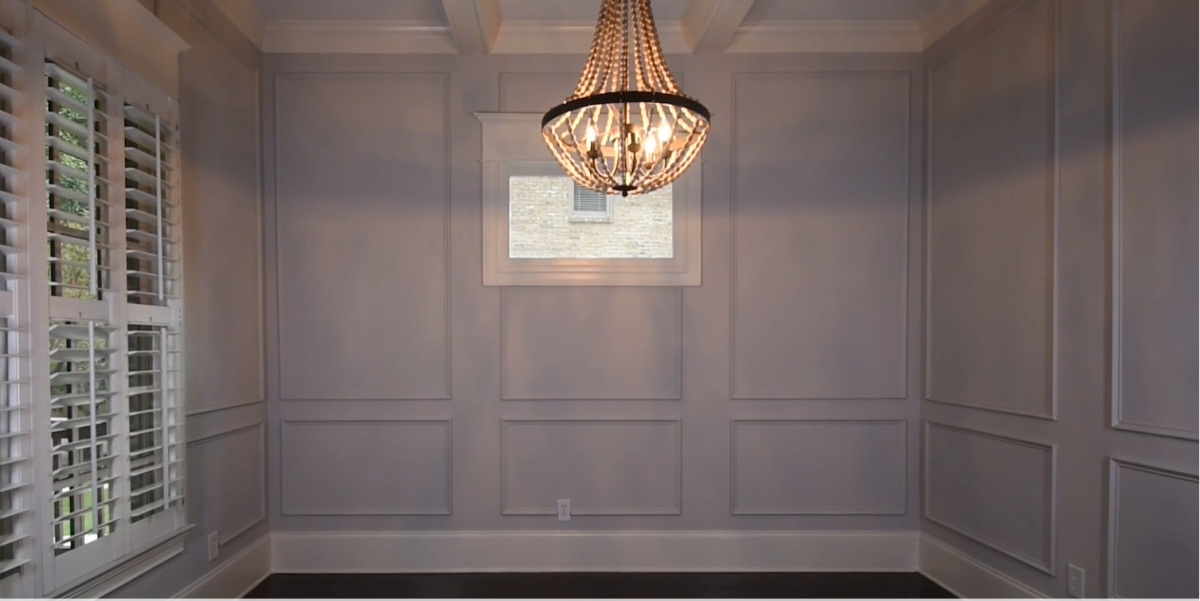
HELPFUL TIPS WHEN CREATING AN ACCENT WALL
- Choose a balanced, unobstructed wall that stands out.
- Choose rooms or spaces where you want to make an impact. Bedrooms, living rooms and entryways are great spaces to create a custom look. Select spaces where guests will see it, or where you spend a good amount of your time.
- Bold colors really make a statement. Dark greens, grey, black and blue are currently in.
- White accent walls make a statement without being too bold.
- Try to pick a style of accent wall that complements the look of your home and room; just because you like a modern style wall doesn’t mean it’s the best pick for a colonial style room.
- Go in with a plan and draw out your design before beginning.
- Find 2-3 moulding profiles that you think will achieve the look you’re going for. Then, take each sample and place it on the wall to see which you like the best.
- Create a jig if you have to repeat a cut. This will save time and help with consistency.
- Use hot glue to apply moulding first so that you can adjust the moulding if needed. Then use finishing nails to secure the moulding.
- Rent a nail gun, use your own or use an adhesive.
- Once everything is in place, apply more nails to ensure it is long lasting.
- Use putty to the nail holes rather than caulking for a better finish.
- If using a paint sprayer, keep 1.5 to 2” of space between you and the wall for an even application.
- Take your time in the finishing stage. The little details when you finish will make the wall look more polished.
- We estimate that creating an accent on a 12′ x 8′ wall can cost around $200. This includes paint, moulding, tool rentals and other materials. You can save money by using tools from your home or borrowing from friends.
For more tips and home inspiration, follow us on Instagram, Pinterest and Facebook! @WeAreWoodgrain